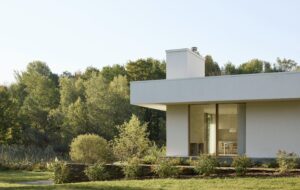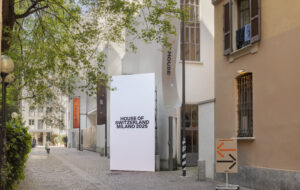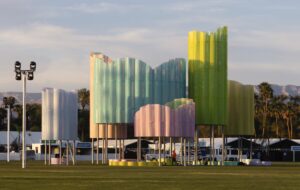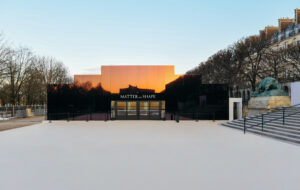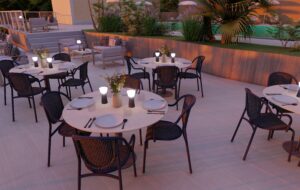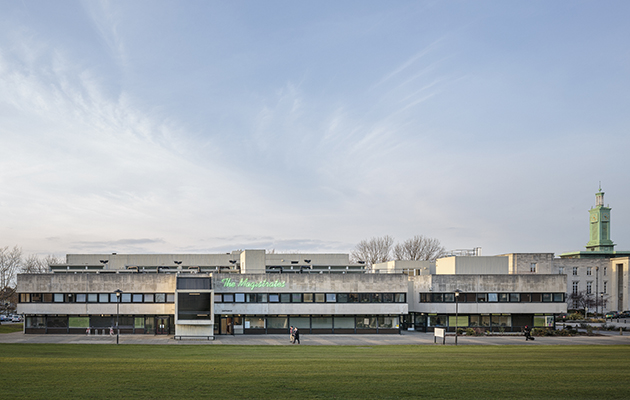 Redevelopment of Waltham Forest Magistrates Court as temporary offices, north London (2018)
Redevelopment of Waltham Forest Magistrates Court as temporary offices, north London (2018)
Gort Scott has made a name for itself reimagining London’s less glamorous postcodes. Just don’t call it regeneration, writes Debika Ray
On a Thursday in July, I visit Gort Scott to witness what, for the practice, is the end of an era. Packing boxes are stacked across the two floors it occupies in a typically post-industrial building in Dalston, the firm’s home for the past decade, and one they’ve now outgrown. Jay Gort, one of its two founders, shows me a model that hasn’t yet been boxed up – a private home on a clifftop in Whistler, Canada – and gives me a whirlwind tour. Then we settle in the courtyard with co-founder Fiona Scott to look at photos of the office they’ve designed for themselves in Bermondsey, to which they and their 25-odd staff will move over the weekend.
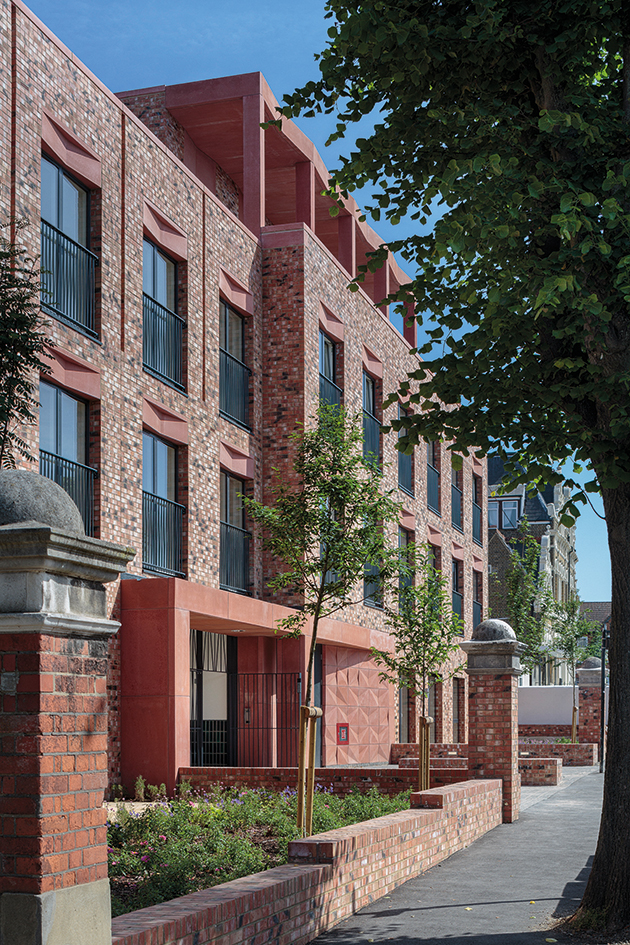 Gainsford Road, 45 affordable ‘pocket’ flats in Walthamstow
Gainsford Road, 45 affordable ‘pocket’ flats in Walthamstow
The change of location coincides with something of a shift into new territory, as the practice takes on more high-profile projects. Among these are a mixed-use tower in Southall; a development of affordable ‘pocket’ apartments in Walthamstow; and that home in Whistler, which has been an excuse to indulge in research into mid-century American precedents such as the Case Study Houses and Frank Lloyd Wright’s Fallingwater. Their most significant project to date is just about to go on site: a £10 million building and open spaces for St Hilda’s College in Oxford.
Gort Scott’s portfolio is diverse, but that’s always been the case: in its early days they worked on everything from a store for Swedish fashion brand Acne in a Georgian townhouse in Mayfair, to the interior of a pub in Cambridge, doubling its capacity and adapting the space for a contemporary context. It was in Cambridge that the duo met – on their first day as undergraduates – going on to sit together for the next three years until Scott left to study at the Royal College of Art in London. They came back together in Cambridge soon afterwards to teach alongside such names as David Kohn, Tom Emerson, David Hills and Piers Taylor, while also working at a few other practices (Scott at Adjaye Associates, MVRDV and DSDHA, and Gort at London-based 5th Studio). In 2007, they decided to set up their own.
Just a few months later, the global recession hit. ‘It was quite a shock,’ Scott says. ‘But we told ourselves that if we stuck to our guns and did what we were interested in, and were still here in two or three years, then we’d be all right.’ They survived, but the conditions of the time shaped the context they worked in and their practice. ‘We’re interested in how cities get built and people seemed to question this more during the recession,’ Gort explains, adding that the scarcity of work gave them space (or rather time, says Scott) to explore ideas that have direct implications for their work today.
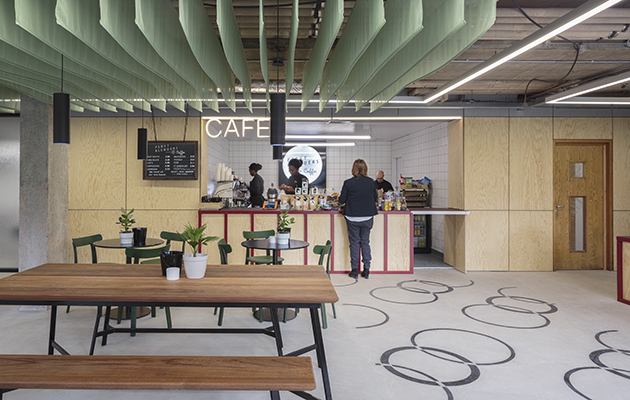 At the Magistrates, a ground-floor cafe allows the public and council officers to work alongside each other
At the Magistrates, a ground-floor cafe allows the public and council officers to work alongside each other
In particular, a research project for Design for London and the London Development Agency into the future of the city’s high streets laid the foundations for many of their subsequent projects, and cemented their interest in slightly forgotten parts of outer London with little obvious potential for regeneration. Today, we know this as ‘placemaking’ – a term that has been seized upon by every developer looking to inject a sense of ‘character’ into a scheme through the formulaic addition of pop-ups and cafes.
But when Gort Scott began, they say, the value of small interventions was still not fully understood. They also had trouble convincing local authorities that slightly rundown but characterful parts of the streetscape were worth retaining. ‘A lot of plans saw large swathes of London as a blank slate,’ says Scott. ‘For us, the idea that you start from scratch is anathema.’ Instead, in all their work, Gort Scott strive to retain the existing character of a place and build on it. ‘Our work is about urban evolution rather than regeneration – the former suggests starting again, whereas evolution is about finding what’s already there and building on it and nurturing it,’ Gort says.
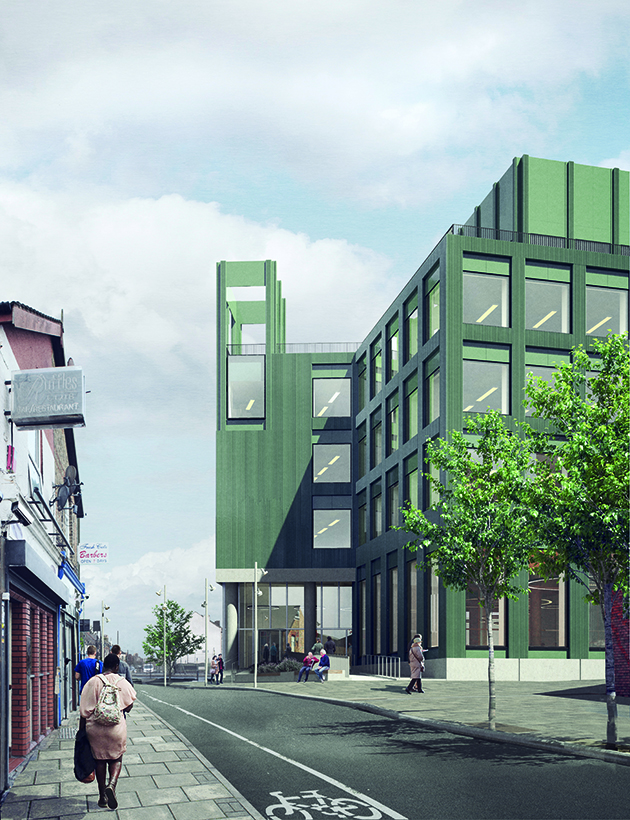 The new civic quarter under development in Harrow
The new civic quarter under development in Harrow
In January, Sean Griffiths, formerly of FAT Architecture, criticised the idea of placemaking as a ‘deeply conservative idea’ that chimes with current notions about the primacy of local character and tradition. But Gort Scott has little interest in anodyne, chocolate-box conservation. As Gort says: ‘There’s something fascinating about areas that aren’t necessarily smooth and clean and that have conflict and collisions, which is what gives London its vitality.’ And their work, while interested in context, does not seek to blend in or strive for pure function at the expense of craft and tactility – see the sculptural public toilet they designed for Wembley in 2016, whose filigree metal facade glimmers against the pavements yet nods to its surroundings with shapes that consider each angle of approach. ‘Even with a small building you can give something more to the area around it – a gift to the city, rather than just a function,’ Gort says.
This theme of considering the spaces between and around buildings is one that runs through Gort Scott’s work. Since their research for the LDA, they have worked on improvements to such areas as Cricklewood High Street, Walthamstow Town Centre and Colliers Wood. Their interventions in places like these look to preserve existing uses, carve out spaces behind the main line of shops and encourage a diverse range of activities beyond simply shopping – juxtaposing workspaces, community centres and outdoor spaces with residential and commercial areas, and looking beyond architecture itself. ‘We’ve always been interested in the wider implications of things on the bigger strategic scale – in how you influence change not in a top-down way, but by understanding the forces at work in shaping cities and work within them,’ Scott says.
As time has progressed, such smaller projects have given way to larger ones, but still with a strongly civic or public-facing stance. In progress now is what Gort describes as their ‘dream project’: a new civic centre in Harrow that comprises the council chamber, offices, a library, community rooms, co-working space, cafe, retail space and apartments. Clad in green ceramic to reference the area’s traditional glassmaking, it sits behind the high street and near a park, bringing together all the practice’s interests in where architecture meets the public realm, and raising questions about the role of civic architecture in the contemporary world and an age of austerity.
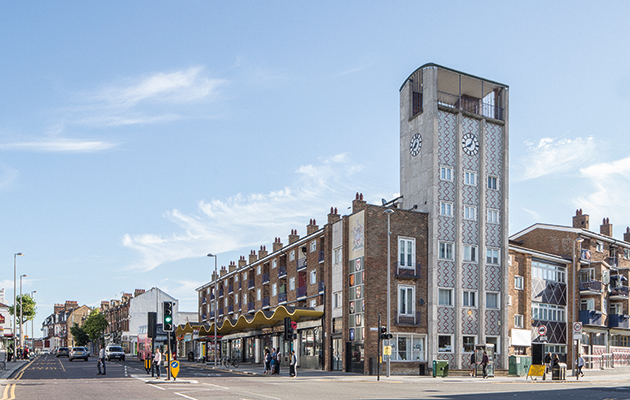 Walthamstow Central Parade, a 1960s office building revamped as a cultural and business hub
Walthamstow Central Parade, a 1960s office building revamped as a cultural and business hub
On the face of it, the plans and context for St Hilda’s College in Oxford looks very different to this urban work, but it still draws on similar principles – creating a way of moving through public spaces and architecture, rather just designing a standalone structure. This project is likely to give the practice a new level of visibility.
Scott and Gort have been talking with their London peers – practices such as Mae, Phil Coffey and Morris and Co – about the future of the British economy after Brexit. While they say the practice isn’t yet big enough to win work abroad with ease, it is starting to explore the option. But a recent spate of large project wins in the UK has put them in position that’s reminiscent of their early days. ‘Hopefully we’ll have a chance to give ourselves some space and time to think about where good buildings are being built, and where the great architecture is happening,’ says Gort. Space and time: it’s worked for them before.

